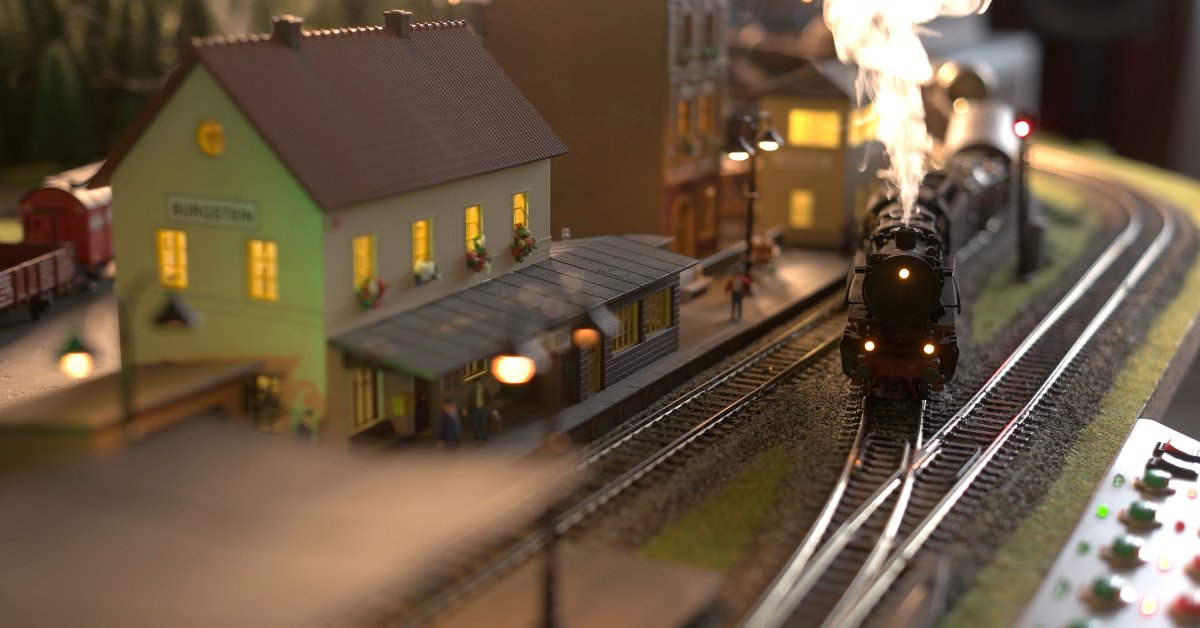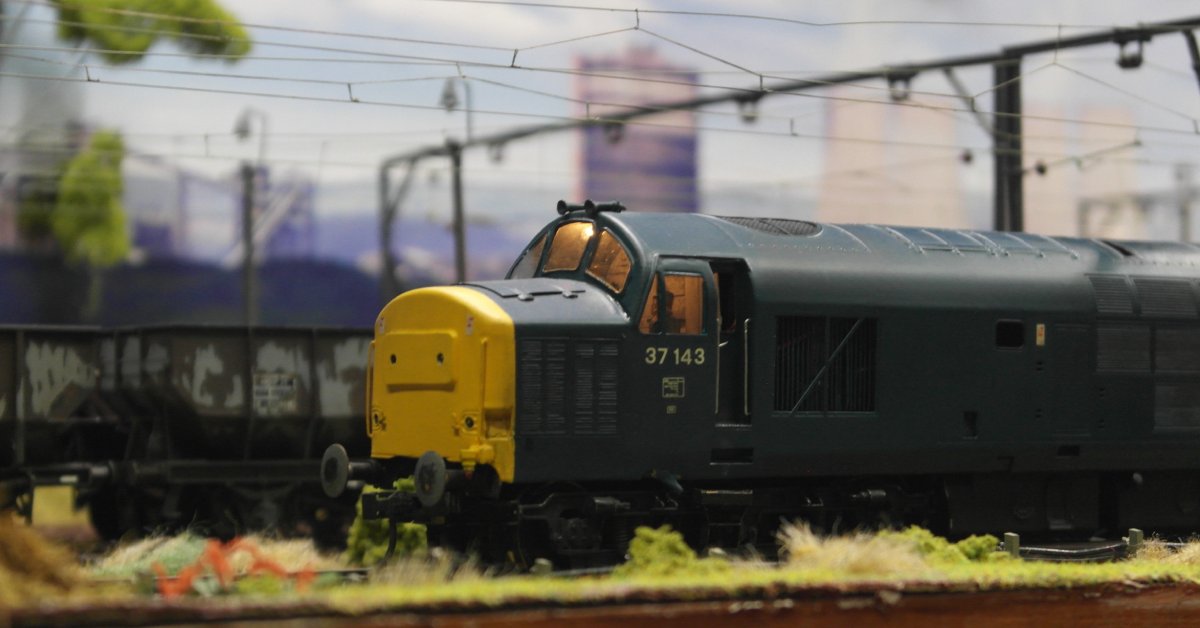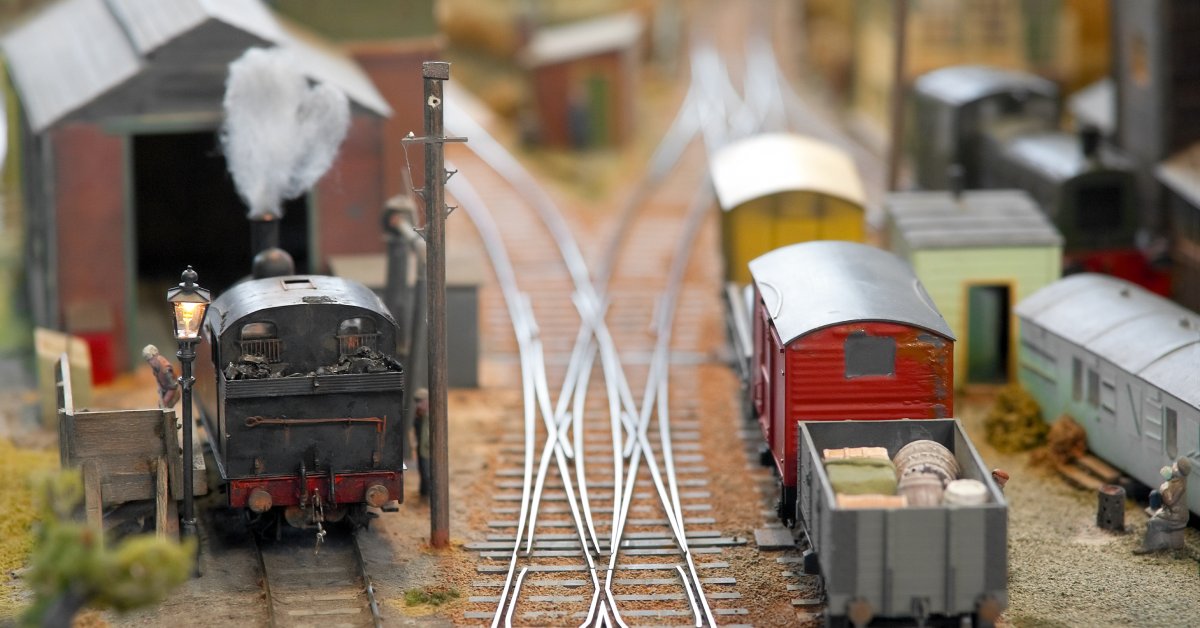The Basics of Model Railroad Tracks: Key Things To Know
Starting a model railroad track can be a lot of fun, but how do you do it properly? Here are the key things you need to know about model railroad tracks basics.
by Theodore Hust • May 30, 2025
If you're interested in G-scale model railroading, the tracks are just as essential as the trains themselves. These large-scale models offer stunning detail and durability, making them perfect for both indoor and outdoor layouts. Whether you're just starting out or looking to improve your setup, by understanding the basics of model railroad tracks, as well as all the key things you need to know, you can build a system that runs smoothly for years to come.
G-Scale Tracks Are Larger and Sturdier
G-scale tracks have incredible size and durability. The robust construction is specifically designed to support both indoor and outdoor G-scale train layouts. These rails are typically spaced 1.75 inches (45mm) apart, making them significantly wider than those used for other model railroad gauges.

Material Matters
The material of your tracks plays a significant role in their functionality and longevity. G-scale tracks are commonly made from brass, stainless steel, or aluminum. Brass tracks are the most popular due to their excellent electrical conductivity, and versatility for indoor and outdoor use. The classic aesthetic also provids a traditional look to your layout.
Stainless steel tracks are a favorite for certain enthusiasts as well. Aluminum tracks are lightweight and often more budget-friendly, making them a great choice for beginners or those building temporary displays for the holidays or events.
Straight vs. Curved Tracks
When planning your layout, it’s important to consider the balance between straight and curved tracks. Straight tracks are essential for long, uninterrupted runs that let your trains pick up speed or showcase their design. On the other hand, curved tracks add visual interest and allow your trains to navigate turns easily. The ratio of straight to curved tracks you’ll need depends on your layout goals, but a mix of both creates a railway that’s both functional and captivating to watch.
Track Radius Affects Train Performance
The size and design of G-scale trains mean they require larger track radii than smaller-scale models. A larger radius allows for smoother operation, particularly for longer locomotives and cars that need extra space to navigate curves without derailing.
Tight curves can cause unnecessary strain on your trains, leading to performance issues or even damage over time. Opting for a bigger radius ensures fewer derailments, better overall performance, and a more enjoyable experience, especially for complex or outdoor layouts.
Using Flexible Tracks
Flexible tracks are a fantastic option for creating custom layouts and unique designs. Unlike rigid tracks, you can bend flexible tracks and adjust them to fit challenging areas or form creative patterns that might not be possible otherwise. This adaptability is especially useful for outdoor setups where terrain variations make rigid tracks difficult to place. With flexible tracks, you have the freedom to experiment and bring your vision to life, whether it’s a winding mountain railway or a sprawling garden layout.
Proper Track Spacing
Proper track spacing is crucial when designing your layout, especially if you plan to have parallel tracks. G-scale trains are larger and wider than smaller-scale trains, so leaving enough room between tracks is essential to prevent collisions when two trains pass each other. Insufficient spacing leads to accidents or derailments, particularly during curves or when operating longer cars.
Ballasting Your Tracks
Ballasting your tracks is more than just a way to make your layout look realistic; it also provides practical benefits. By using crushed stone, gravel, or other materials for ballast, you can stabilize your tracks, reduce vibrations, provide proper drainage and provide cushioning for your trains. Ballasting gives your setup a solid foundation, ensuring smooth operation and helping your trains stay on track.
Joiners Are Key to Stability
Track joiners, also known as rail joiners, are small but essential components that connect individual pieces of track together. A snug, secure fit is crucial for maintaining electrical conductivity and preventing your tracks from shifting over time.
Loose or poorly fitted joiners can lead to performance issues, such as power interruptions or misalignments. For the best results, use joiners made from the same material as your tracks, as this ensures a consistent connection and minimizes the risk of corrosion or wear.
Be Mindful of Slopes and Grades
When designing your layout, pay close attention to slopes and grades. G-scale trains perform best on gentle inclines, ideally less than 4%. Steep slopes can cause your trains to struggle uphill or lose control downhill, leading to potential accidents or damage. Gradual, well-planned slopes not only help your trains operate smoothly but also add a realistic touch to your layout, mimicking the natural terrain of real railroads.
Powering Your Tracks
A reliable power supply is essential for keeping your G-scale trains running smoothly. Most G-scale tracks have electrical conductivity, so it’s important to use a power pack that can handle the demands of larger trains and longer tracks. If you’re planning a large or complex layout, consider investing in a more advanced power system to meet your needs.

Cleaning Your Tracks Regularly
Tracks accumulate dirt, oxidation, and debris over time, especially outdoor layouts exposed to the elements. Regular cleaning is critical to maintaining performance, as a clean track ensures steady power flow and prevents disruptions during operation. Use a track-cleaning tool, cloth, train or engine to remove buildup and keep your tracks in top condition.
Expansion Gaps Are Essential
Outdoor G-scale layouts often experience temperature changes that cause tracks to expand and contract. Without proper expansion gaps, this natural movement leads to warping, buckling, or misalignment over time. Leaving small gaps between track sections allows for movement, ensuring your tracks remain stable and aligned no matter the weather.
Insulating Sections for Multiple Lines
If you plan to operate multiple trains on different lines, insulating specific track sections can help you control power distribution more effectively. This technique is particularly useful for creating sophisticated layouts with independent circuits, allowing you to run multiple trains simultaneously without interference.
Planning Is Everything
A well-thought-out plan is the foundation of any great G-scale layout. Before laying down your first piece of track, take the time to consider your available space, the type of terrain, and how you want your trains to run. Sketch out your ideas, experiment with different configurations, and think about how your layout will fit into its environment. Planning not only saves time and effort but also ensures your layout meets your needs and vision. Oh and planning can save quite a bit of money on track that may not be used too.
G-scale tracks open up a world of possibilities for your model railroad tracks, but only when you know key things and basics. With proper understanding, you’ll be able to create the perfect canvas for both intricate indoor layouts and sprawling outdoor setups, and Only Trains is here to help. When you’re looking for quality G-scale components like G-scale straight train tracks, you want Only Trains. With us, it’s easy to roll up your sleeves and design your model train masterpiece!

